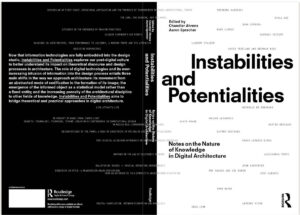 This essay presents an exercise that was performed by an architect and a neuroscientist as the means to produce a method in which a robot can practice crafts usually performed by humans.The ideas exchanged in this discussion defined a framework for a set of experiments examining the possibility of integrating concepts and methods from both architecture and neuroscience into a fabrication method that shared a single platform—a robotic arm. The actual exchange of ideas was based on writing an imagined course of action (case studies), then translating the action into computer code using the specific platform for each field: 1) A computer-aided design (CAD) software that was integrated with a visual programming language for parametric design and 2) a multi-paradigm numerical computing environment for neuroscience.These tools not only defined a professional boundary but also provided insight into the different concerns occupying each of the fields—e.g., while the architectural platform is completely dependent on the 3D representation of objects in virtual space, the scientific one is primarily focused on data-driven operations. Consequently, the concerns that arose from each mind-set were inherently different. Each produced distinct questions that resulted in different courses of action, and each arrived at its own set of criteria for evaluation, validation, and success. While the architect was focused on the product of making, the neuroscientist, in this case, was focused on the process of making.
This essay presents an exercise that was performed by an architect and a neuroscientist as the means to produce a method in which a robot can practice crafts usually performed by humans.The ideas exchanged in this discussion defined a framework for a set of experiments examining the possibility of integrating concepts and methods from both architecture and neuroscience into a fabrication method that shared a single platform—a robotic arm. The actual exchange of ideas was based on writing an imagined course of action (case studies), then translating the action into computer code using the specific platform for each field: 1) A computer-aided design (CAD) software that was integrated with a visual programming language for parametric design and 2) a multi-paradigm numerical computing environment for neuroscience.These tools not only defined a professional boundary but also provided insight into the different concerns occupying each of the fields—e.g., while the architectural platform is completely dependent on the 3D representation of objects in virtual space, the scientific one is primarily focused on data-driven operations. Consequently, the concerns that arose from each mind-set were inherently different. Each produced distinct questions that resulted in different courses of action, and each arrived at its own set of criteria for evaluation, validation, and success. While the architect was focused on the product of making, the neuroscientist, in this case, was focused on the process of making.


